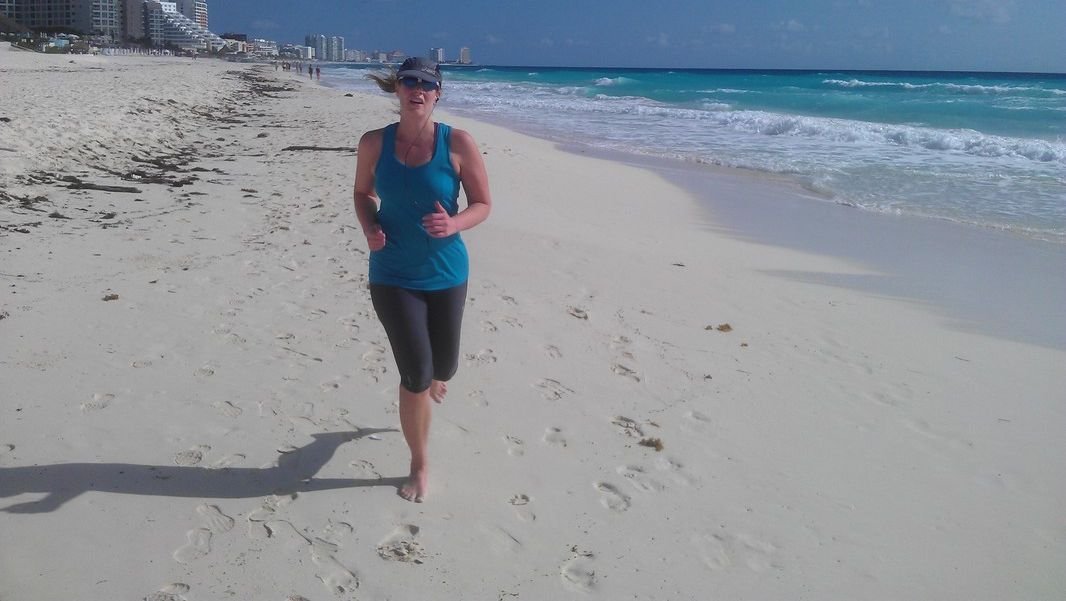5 Best Ways to Make Beach Running Part of Your Travel Workout
If you do a lot of traveling, especially to places like the Caribbean and Mediterranean, you’ll likely end up at a lot of destinations with beaches. So, you might as well use these sandy stretches as part of your workout.
And when you're done, you can always just plop down and enjoy the soft sands. After a refreshing plunge in the sea, that is.
Going to a warm-weather spot where the beaches are the hot spots? You know, the Caribbean Islands, Hawaii, Spain, Southern France, Indonesia.
Trying a little beach running can be a great way to mix up your routine and also make sure you stay on track while traveling. Here is what you should know about running on the beach.
1. Go Early or Late
Nothing could be more Zen than rising at the crack of dawn and getting your blood pumping with a run on the beach as the sun starts rising over the horizon. This is a perfect way to get the day started and enhance your mood for the rest of the wonderful vacation experiences to come. You can also put on a capper while taking a jog as the sun sets, and you'll be all primed and pumped up for a night of eating, drinking and dancing.
The primary reason to time your beach run for sunset or sunrise, though, is that you won't be out under the blazing sun at its hottest. Or maybe that's your thing. You like a little bit of torture when you train. Do your thing. Burn, baby, burn!
2. Set a Proper Pace
Running on sand is more difficult than running on a solid surface. The beach is softer and undulating. You might have to dodge a kid who suddenly makes a break toward the water chasing a ball. This is a beach after all.
The people frolicking at the water's edge certainly may outnumber those using it for a running track. These conditions conspire to keep you from banging out your typical mile times. No worries. You're still getting all the benefits of a fabulous workout.
3. Mix It Up
Run on the wet sand. This will be firmer and allow for your typical gait. But it's also sloping, so you should run half the time one way and turn around and run in the opposite direction for the remainder of your workout. That way you get even wear on both feet, knees and hips. Dedicate some time in each workout to running on the dry and fluffier sand.
This increases the intensity as you have to work much harder to move on this type of surface. It also works the muscles and tendons in your legs and feet in ways you probably are not used to.
4. Go Barefoot
Soft sand in your toes is just what you thought about when planning a beach vacation. And maybe your friends think you're crazy for rising for early morning runs on your Caribbean getaway, but that's just how you roll. But don't push it when you choose no shoes.
Take it easy, enjoy a slower pace and fewer miles during these barefoot beach runs because if you're new to running with your feet au naturel, you will definitely notice the fatigue setting in to your calves, ankles and achilles tendons, as well as your arches and the muscles on the top of your feet.
Keep your eyes down, though; not much is worse than a stepping barefoot onto a jagged seashell.
5. Have Fun
In addition to your typical jogging, mix in some sprints in the soft sand. Add pushups, burpees, jumping jacks and sand crawls. Heck, do some cartwheels if you want — and be sure to cool off and clean up by jumping into the sea. Time to celebrate. You're on vacation, just crushed a beach workout and are about to head to the poolside bar for a day of lounging and a few fruity cocktails (you know, the ones with the umbrellas in them).
Thanks for reading,
JR
More of Our Travel Fitness Stories to Check Out
Fort Lauderdale Beach Is Fantastic for the Fit Traveler
7 Reasons to Go Out for a Run When You Are Traveling
Free Airport Fitness Areas Keep You Refreshed When You Travel

